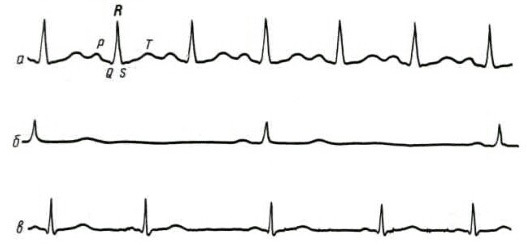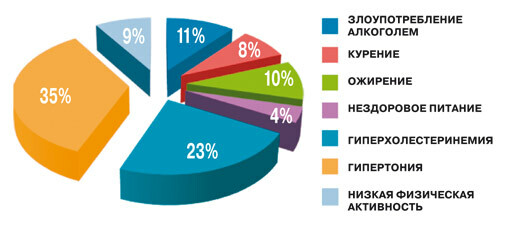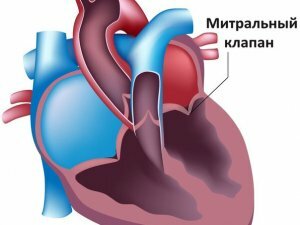Atherogenic coefficient: what is it and how to calculate the atherogenic index in men and women
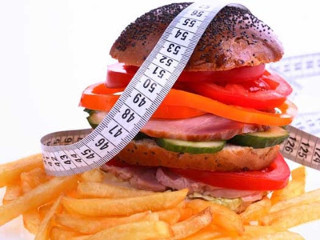
Content:
- Among women
- In men
- How to calculate
Many have heard about the dangers of cholesterol and serious diseases associated with it.
Due to a lack of knowledge, some people go on rigid diets, begin to clean blood vessels using folk methods, or, even worse, take medications that can harm their health.
However, cholesterol is naturally present in the body and has important functions. It differs in factions, some of which are beneficial, others harm. In order to distinguish between good and bad cholesterol, a biochemical blood test is performed, where the atherogenic coefficient (CA) is detected.
The term atherogenicity determines the ratio of cholesterol fractions, where "bad" prevails.
Thus, the calculation of the coefficient of atherogenicity makes it possible to determine the degree of risk of developing atherosclerosis.
Cholesterol is found in the blood in the form of complex compounds that are soluble. It is associated with proteins, and this compound is called lipoprotein (lipoprotein).
The following lipoproteins are distinguished:
- high-molecular-weight HDL cholesterol is characterized by high density;
- low molecular weight LDL have a low density;
- very low molecular weight VLDL compounds are distinguished by their minimum density.
In order to determine the risk of vascular disease, it is desirable to calculate all groups of complex compounds (lipoproteins). For a physician studying a lipid profile, indicators of total cholesterol, its fractions and triglyceride are important. The latter belongs to fats and is a product of carboxylic acids and glycerol trihydric alcohol.
How the cholesterol coefficient of atherogenicity is formed
Approximately 80% of cholesterol is produced in the liver, gonads, adrenal glands, kidneys and intestines. The rest enters the body with food. Cholesterol interacts with apoliproteins (proteins) to form high and low density compounds.
If cholesterol enters the body from the outside, then it is part of the chylomicrons, which are synthesized in the intestines. The compound then enters the bloodstream.
Low molecular weight lipoproteins are transported from the liver to the tissues, high molecular weight - to the liver, and chylomicrons - to the liver and peripheral tissues.
HDL is produced by the liver. Chylomicrons, entering the liver, are converted to LDL and HDL, depending on the apoliprotein with which cholesterol forms a compound.
Low density lipoproteins are called atherogenic. If a large amount of them is produced, then more fatty acids enter the cells. Fats are removed from cells by binding them to HDL. Once in the liver, cholesterol is finally hydrolyzed.
The atherogenic coefficient shows which lipoproteins are more present in the blood. If low molecular weight, then the likelihood of developing atherosclerosis increases.
The ratio of the ratio of "good" and "bad" cholesterol
Blood cholesterol levels vary. For one person, it will be 7 units, for another - 4. The total cholesterol (GC) index does not give a complete picture of whether there is a risk of the formation of cholesterol deposits in the vessels or not.
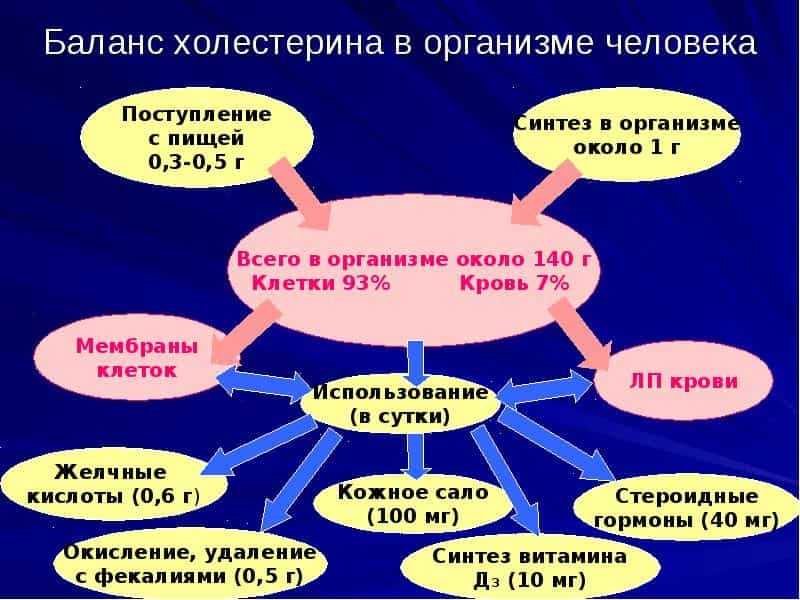 For example, if in the first case, high cholesterol levels are achieved due to increased HDL cholesterol, then the likelihood of atherosclerosis is low. High-density lipoproteins are responsible for the transport of fats from cells to the liver, where they are processed. If HDL is high, then they speak of antiatherogenicity.
For example, if in the first case, high cholesterol levels are achieved due to increased HDL cholesterol, then the likelihood of atherosclerosis is low. High-density lipoproteins are responsible for the transport of fats from cells to the liver, where they are processed. If HDL is high, then they speak of antiatherogenicity.
In the second case, LDL can be increased, and the level of high molecular weight compounds is low. This situation is characterized by high atherogenicity.
For the development of atherosclerosis, a strong excess of the level of low molecular weight compounds is not necessary. Low HDL levels can also cause pathological processes.
In order to correctly determine whether there are violations or not, the difference between these indicators is calculated. For example, with a coefficient equal to 2 mmol / L, LDL is twice as much.
Indicators of the coefficient of atherogenicity:
- up to 3 - within normal limits;
- up to 4 - an increased rate that can be reduced with diets and increased physical activity;
- above 4 - a high risk of developing atherosclerosis, which requires treatment.
High levels of "bad" cholesterol arise from an unbalanced diet. Eating large amounts of fatty foods disrupts lipid metabolism, which leads to an increase in the amount of low-density lipoproteins.
High molecular weight compounds are synthesized only in the liver. They do not come with food, but polyunsaturated fats, which belong to the Omega-3 class and are present in fatty fish, can contribute to an increase in this fraction.
About the causes of atherosclerosis
The main reason for the development of atherosclerosis is considered to be an increased level of low molecular weight fractions of cholesterol in the blood. Cholesterol accumulates on the walls of blood vessels, and over time, the deposits grow, narrowing the lumen and forming plaques.
In places where cholesterol accumulates, calcium salts are deposited, which cause pathological changes in blood vessels: loss of elasticity and dystrophy.
However, this is not the only reason for atherosclerotic vascular changes. The disease can develop against the background of viral infections, age-related changes, improper lifestyle and a number of diseases. Therefore, we can talk about a group of people who are most susceptible to the development of pathology.
Risk factors:
- heredity;
- age-related changes after 50 years;
- gender (in men, pathology occurs more often);
- increased body weight;
- low level of physical activity;
- diabetes;
- hypertonic disease;
- infections (cytomegalovirus, herpes, chlamydia);
- smoking.
When the atherogenic coefficient is above 3 mol / l, cholesterol begins to linger on the walls of the vessels. If this figure is higher, then the process goes faster.
As a result, cholesterol plaques are formed, which can be destroyed, turning into blood clots. In this case, a person is diagnosed with such a dangerous disease as thromboembolism, which can lead to sudden death.
Atherogenic index: the norm in women and the reasons for the increase in the atherogenic coefficient
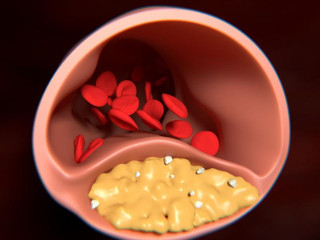 Vascular atherosclerosis often affects men, therefore, the norms established for them are higher than for the fair sex. The coefficient of atherogenicity is lowered in women due to the action of the hormone estrogen.
Vascular atherosclerosis often affects men, therefore, the norms established for them are higher than for the fair sex. The coefficient of atherogenicity is lowered in women due to the action of the hormone estrogen.
The hormone has a positive effect on the walls of blood vessels, providing them with good elasticity, which protects against the formation of cholesterol deposits. Cholesterol is deposited on damaged areas of blood vessels.
If the vessels become inelastic, then as a result of blood turbulence, multiple damage to the walls occurs, and cholesterol is fixed in these places. Due to the natural mechanism of vascular protection, women are less likely to be diagnosed with diseases such as strokes and heart attacks.
The atherogenic coefficient is lowered in women only up to 50 years. After the onset of menopause, the hormone ceases to protect blood vessels and women become susceptible to the development of atherosclerosis in the same way as men.
Lipoprotein level up to 50 years (mmol / l):
- total cholesterol - 3.6-5.2;
- high density lipoproteins -
0,86-2,28; - low molecular weight compounds - 1.95-4.51.
The calculation of the atherogenic index is carried out according to the formula, where AI is determined by the difference in total cholesterol and high density plipoproteins, divided by HDL.
Atherogenic index in women: norm by age (mmol / l):
- up to the age of thirty - up to 2.2;
- after thirty - up to 3.2.
After fifty years of age, the atherogenic index in women is calculated according to the norm for men.
The reasons for the increase in rates in women
The first reason for the increase in CA in women is unhealthy diet. If the diet contains a lot of fatty foods: pork, butter, sour cream, etc., then this contributes to the accumulation of fats in the body. Cells do not need large amounts of LDL, so they constantly circulate in the blood in large quantities.
Another reason is related to the first. If fat is not consumed as a result of physical activity, then it accumulates in cells and the level of low molecular weight lipoproteins in the blood also increases.
Smoking slows down the metabolism of fats, which also increases blood cholesterol levels. It is noteworthy that alcohol enhances the process of lipid metabolism.
However, you should not use it for this purpose, since alcoholic drink causes other dangerous diseases, as well as interferes with the normal functioning of the liver, which is important for the synthesis of HDL.
The reason for the deviation of the atherogenic index from the norm in women can be heredity, which negatively affects lipid metabolism.
One way or another, a violation of protein-fat metabolism contributes to an increase in CA. Therefore, in the analysis of blood, such an indicator as the level of triglycerides is also taken into account.
Triglyceride norms (mmol / l):
-
1,78-2,2 — norm; -
2,2-5,6 — increased level; - above 5.6 - high concentration.
On the Internet, women are interested in the question: what to do if the atherogenic coefficient is increased in the blood test form. Such an indicator of CA can arise for various reasons, so the approach to treatment should be individualized.
Depending on the value of the coefficient, cholesterol reduction can be achieved with a diet that excludes animal fats, sports or drug therapy aimed at reducing synthesis cholesterol.
In order to eliminate the negative effect of cholesterol on blood vessels, concomitant diseases should be treated: cytomegalovirus or chlamydial infection, diabetes mellitus, hypertension. During menopause, women are prescribed estrogen replacement therapy.
Atherogenic coefficient: the norm in men and methods of lowering blood cholesterol
If atherosclerosis of the vessels affects women after sixty years, then in men it develops earlier. The atherogenic index is increased due to the fact that the vessels lose their elasticity faster, and, consequently, the risk of developing vascular pathologies is higher.
Lipoprotein level in men (mmol / l):
- total cholesterol - 3.5-6.0;
- high density lipoproteins - 0.7-1.76;
- low molecular weight compounds -
2,21-4,81.
After
Atherogenic coefficient: the norm in men by age (mmol / l):
- 20-30 years old - 2.5;
- after thirty years - 3.5.
The reasons for the increase in performance in men
The reasons for the increase in CA, as in women, are the violation of protein-fat metabolism. These include oversaturation of the body with animal fats, a sedentary lifestyle, stress, smoking and other factors that negatively affect the metabolism of fats.
In some cases, the atherogenic coefficient may be increased while taking hormonal drugs. However, this occurs only for the duration of treatment, and after stopping taking medications, the patient sees the atherogenic index on the test form as normal.
A biochemical analysis of blood in men also reveals the level of lipid energy reserves in the body. The norms for triglycerides coincide with the norms established for women.
First of all, men should change their lifestyle: give up bad habits, increase physical activity and reduce the amount of animal fats consumed. Of course, you shouldn't become a vegetarian if you are used to meat.
However, you should choose lean beef or fish and steam rather than fry. If you cannot seriously go in for sports, then ordinary walking will help. For example, you can walk to work instead of using public transport.
If the CA is significantly exceeded, the doctor prescribes conservative treatment, which consists in taking satins, which reduce the synthesis of cholesterol in the body.
The atherogenic index: how to calculate and what to do to reduce it
To determine the CA, blood is taken from the patient and a biochemical analysis of the material is performed. Blood is taken from a vein in the morning, since food should not be taken for eight hours before taking the test.
To determine the fractions of lipid compounds in the laboratory, precipitation and photometry methods are used. Then the atherogenic coefficient is calculated.
Having familiarized ourselves with the concept of the atherogenic index, we will consider below how to calculate it using different formulas.
The basic formula for the atherogenic index, which is usually used when processing blood test data, looks like this: AI = (cholesterol - HDL) / HDL, where IA is the atherogenic index, CS is total cholesterol, HDL is a high molecular weight compound.
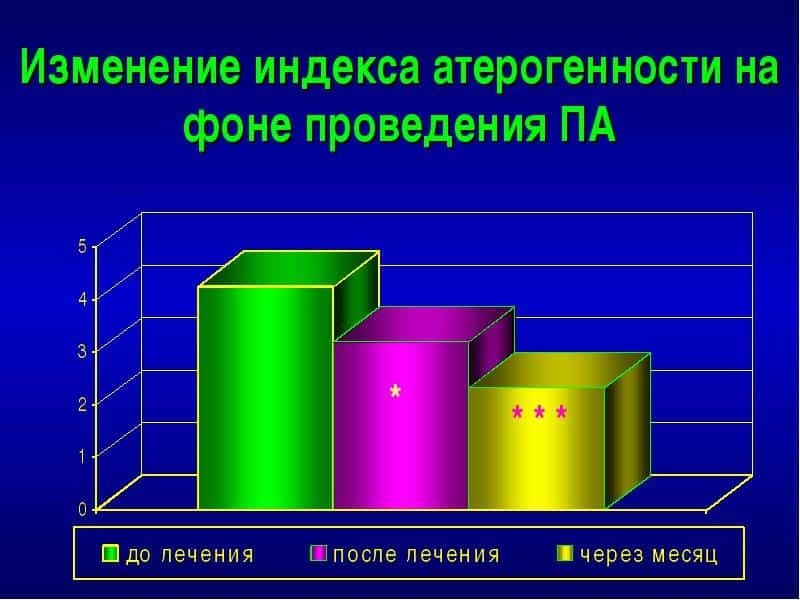 In some cases, it is required to calculate the atherogenic coefficient index taking into account low and very low density lipoproteins. The latter are identified through an indicator of the concentration of triglycerides. VLDL = TG / 2.2. So the general formula is: AI = (LDL + TG / 2.2) / HDL.
In some cases, it is required to calculate the atherogenic coefficient index taking into account low and very low density lipoproteins. The latter are identified through an indicator of the concentration of triglycerides. VLDL = TG / 2.2. So the general formula is: AI = (LDL + TG / 2.2) / HDL.
The atherogenic coefficient, the norm of which is exceeded, requires the establishment of the cause of this condition. Lipid metabolism is not necessarily impaired, an increase in CA can be caused by pregnancy or other temporary hormonal disruptions. Therefore, do not self-medicate, otherwise you can disrupt the natural mechanisms of the body.
In some diseases, treatment with hormonal drugs is prescribed, in which the rate of the atherogenic coefficient increases. The course of treatment is controlled by a doctor who determines the risks, and if there is a suspicion of the development of another pathology, he can change the therapy.
Diet contributes to a decrease in the atherogenic coefficient. However, this approach may have a downside. For example, a severe restriction of a person in fats, on the contrary, provokes an increased production of lipids in the body. Therefore, the organization of food without excess fats must be competent.
Foods to be excluded:
- sausage and other products containing animal fat;
- lard, fatty pork and lamb, butter, sour cream, egg yolks;
- trans fats, which are found in margarine, spreads and other similar products.
Foods that need to be consumed to replenish the body with fats:
- oily sea fish;
- nuts, walnuts are especially useful;
- vegetable oils: olive, linseed, sunflower.
Green tea and freshly squeezed juices from fruits and vegetables are good additions to proper nutrition. Do not forget about clean water, which contributes to the natural cleansing of the body. It should be drunk at least 1.5 liters per day, not including other drinks.
If the atherogenic index is significantly increased, then the doctor prescribes drug therapy. Of the drugs used are satins, which reduce the production of cholesterol, cation exchangers that bind bile acids in the intestine, and preparations with omega-3 fats, which lower HDL levels.
An alternative to drug treatment is the procedure for mechanical blood purification, which is called extracorporeal hemocorrection. For this purpose, the patient's blood is taken from the vein, passed through special filters and injected back into the vein.
What forms a low coefficient of atherogenicity:
- taking blood tests while lying down;
- diets that exclude animal fats;
- active sports or other physical activity;
- taking a number of drugs: medicines containing estrogens, colchicine, antifungal agents, clofibrate, satins.
A low coefficient of atherogenicity characterizes clean vessels and does not require any treatment. Such tests are often seen in young women, and this is considered the norm.
If, against the background of a decrease in total cholesterol, HDL decreases, then this cannot be called a good treatment. In this case, taking satins that reduce cholesterol production is considered ineffective and dangerous, since the body loses an important component that regulates natural processes.
Partial use of site materials (no more than 30% of the content of the article) is allowed only with a hyperlink on www.med88.ru, full use of the article (more than 30% of the article content) is possible only with written permission edition.

